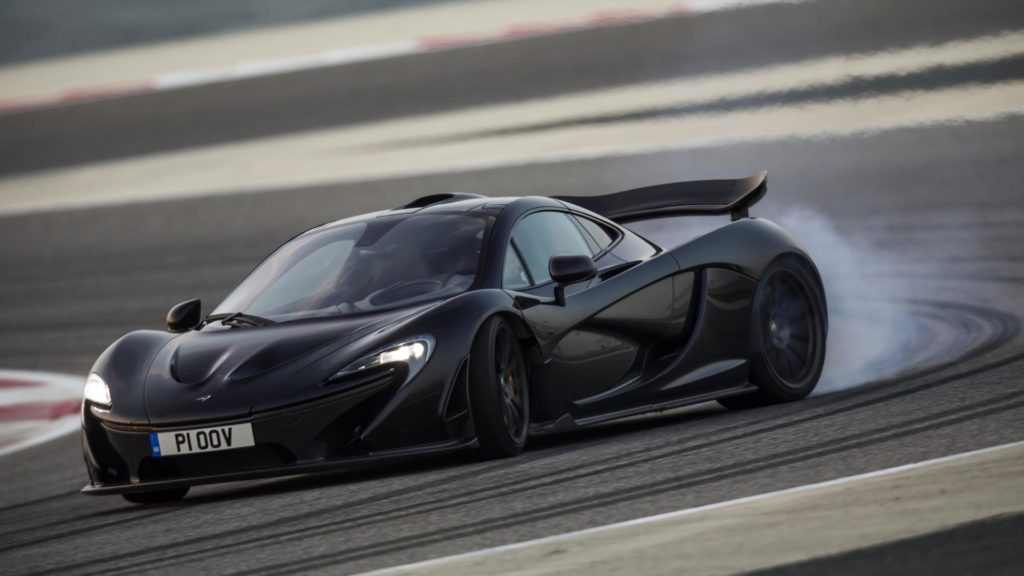Despite hybrid powertrains permeating the auto industry over the last two decades, gas/electric-powered motorcycles have failed to gain much traction in the motorized two-wheeled sector. However as electric powertrain technology continues to rapidly evolve, it’s hard to imagine we won’t soon start seeing the rise of the hybrid motorcycle, though it probably isn’t what you’re expecting.

When most people think of a hybrid, they think “Toyota Prius”, and as a result, hybrid vehicles have developed a reputation for being pretty lackluster in the performance department. That changed around 2011 when BMW unveiled the i8, hybrid supercar featuring a 228hp, 1.5-liter engine paired with a 129hp electric motor. Not long after BMW’s release of the (production) i8 in 2013, other supercar manufacturers followed suit with the creation of their own hybrid offerings; Ferrari with the 950hp LaFerrari, McLaren with its 903hp P1, and Porsche with the 887hp 918 Spyder, and so on.

With the unparalleled amount of torque on tap, it makes sense to utilize electric powertrains at lower speeds, while the ridiculously powerful gas-engines come into play and do their thing at higher speeds, providing the best of both worlds. The electric motors also help the gas engines to perform better, keeping turbos spooled up and plugging in the gaps in an engine’s torque. The makers of these hybrid supercars aren’t using electric motors because they’re trendy or environmentally friendly, they just want to deliver the fastest, baddest machines on four-wheels, and adding a few electric motors to the mix is currently the best way of doing that. This same formula hasn’t been applied to motorcycles as there’s a number of factors currently standing in the way such as the added cost of hybrid motorcycle production, and the lack of real estate where engineers could feasibly shoehorn a couple hundred pounds of batteries into a bike.

While mileage has been a major factor in the auto sector’s adoption of hybrid tech, fuel-efficiency isn’t typically a major concern for buyers in most two-wheeled segments, aside from the small commuter sect which happens to be the only segment offering production hybrids like the Yamaha Grand Filano, Honda PCX Hybrid, or Piaggio Mp3 Hybrid. Even if a manufacturer wanted to improve mileage — or lessen emission output — there are plenty of cheaper, more practical ways of accomplishing that than the implementation of an EV powertrain.

A lot of factors would have to align before a full-size hybrid motorcycle sees production, though it appears behind the sense major marques are already exploring the technology behind closed doors. Back in 2015 word broke that Suzuki was working on a supercar-style hybrid that used a turbocharged engine paired with two electric motor generator units; one to keep the turbo spinning at the ideal operating rpm; and the other to help boost engine performance, fill in the gaps in torque, and smoothen out gear-changes. The Japanese marque filed several patents for its blown liter-sized hybrid, though to date, nothing has come of it.

More recently BMW Motorrad filed patents revealing the marque is working on a hybrid motorcycle that uses a gas engine aided by some electric motors that offer a boost in low-end torque. The patent images reveal a fuel-cell with a soft, flexible bottom that can store a large battery in order to provide boost (or whatever other electronically-driven features), or the battery can be removed, upping the fuel capacity. Prior to this, the brand filed a patent for an electronically-driven front-wheel on an AWD system, similar to the 2WD GS prototype built a few years ago by German tuner company, Wunderlich.

If a major manufacturer does introduce a performance-oriented hybrid motorcycle, I’m betting it’ll be what’s called a “Mild Hybrid”. Mild hybrids feature both gas and electric motors, however, they can’t run on the electric powertrain alone, and instead, use the electric motor to help bolster the gas engine’s performance, or add an additional feature like AWD. Plenty of firms already use small electric motors to perform tasks like reversing on large touring bikes, so it’s not a huge stretch to think electric motors could be used to improve a motorcycle’s performance. One thing is certain though: motorcycle hybrid technology will be very different from cars.

Related Posts
November 18, 2018
The Vintagent Selects: 2018 Motorcycle Cannonball
The world's toughest vintage motorcycle…
October 20, 2017
The Current: Mission Motors Electric Sportbike
The Mission One was the most advanced…




Dear Sirs,
In reference to the article on the hybrid motorcycles would like to share with you the techs specs of the Efesto hybrid motorcycle that has been unveiled during the Eicma show 2019 in Milan Italy.
If you could provide us with an e mail address we can send to you the techs specs or you can find it on our web site http://www.efesto.fr
Here below some videos with interviews where is possible to see the hybrid motorcycle functioning in full electric mode during the show.
I remain at your disposal for any further information.
https://www.moto.it/news/efesto-200novantanove-un-kit-ibrido-per-una-panigale-da-300-cv.html
https://video.gazzetta.it/con-efesto-panigale-ibrida-300-cv/54e3873a-0312-11ea-bf84-e12513809d0c
https://www.youtube.com/watch?v=580-P9rSdMw
Best regards
Luca Morfino
Managing Director
Efesto Sarl
55 Avenue Marceau
75116 – Paris, France
cell phone +39 348 71 42 081
l.morfino@efestoenergy.com
http://www.efesto.fr
Ciao Luca, you can find us at paul@thevintagent.com
Ridley had gas/electric combo so what’s the difference?